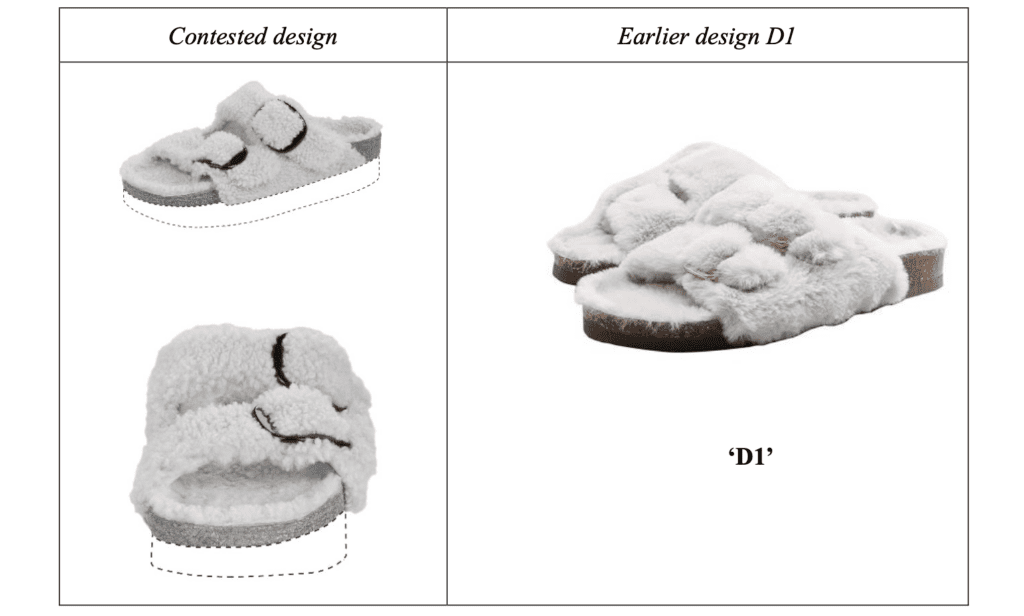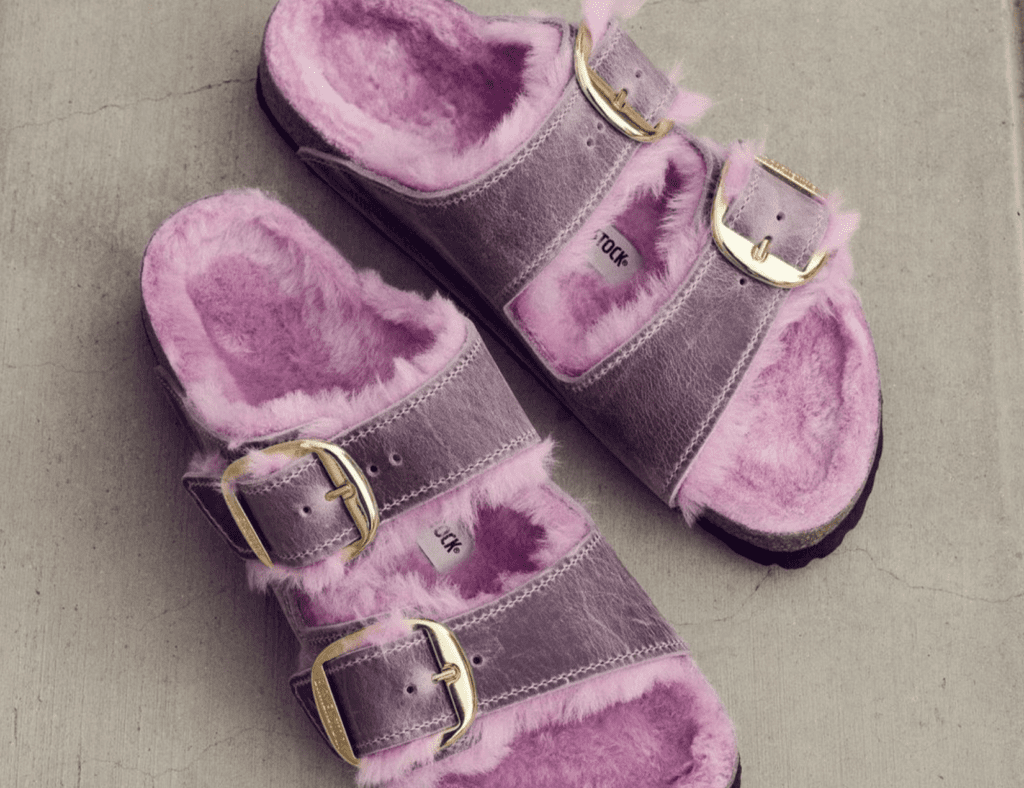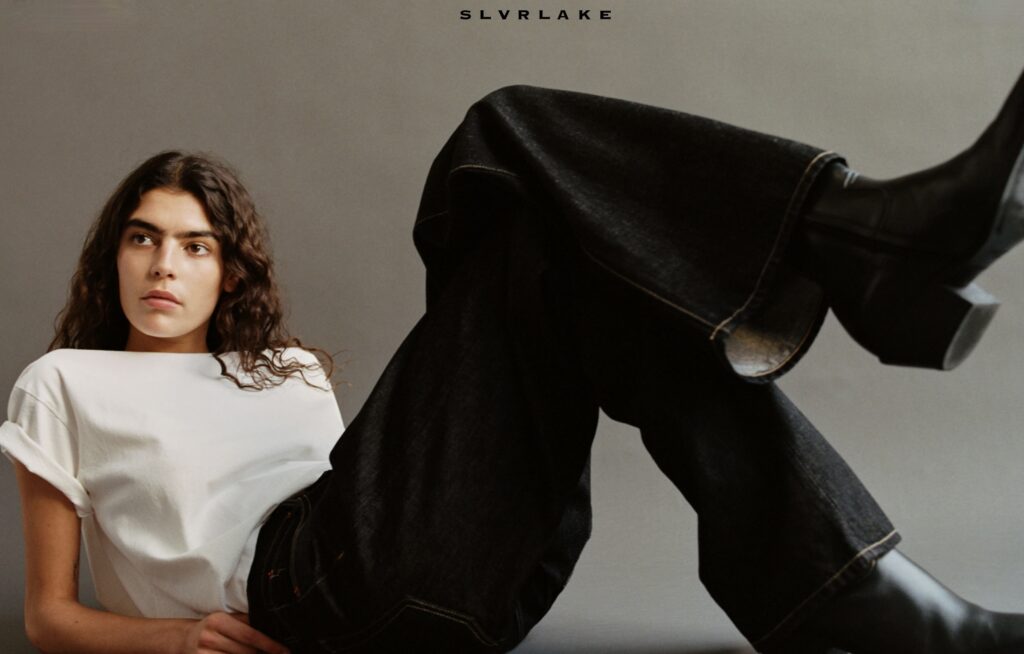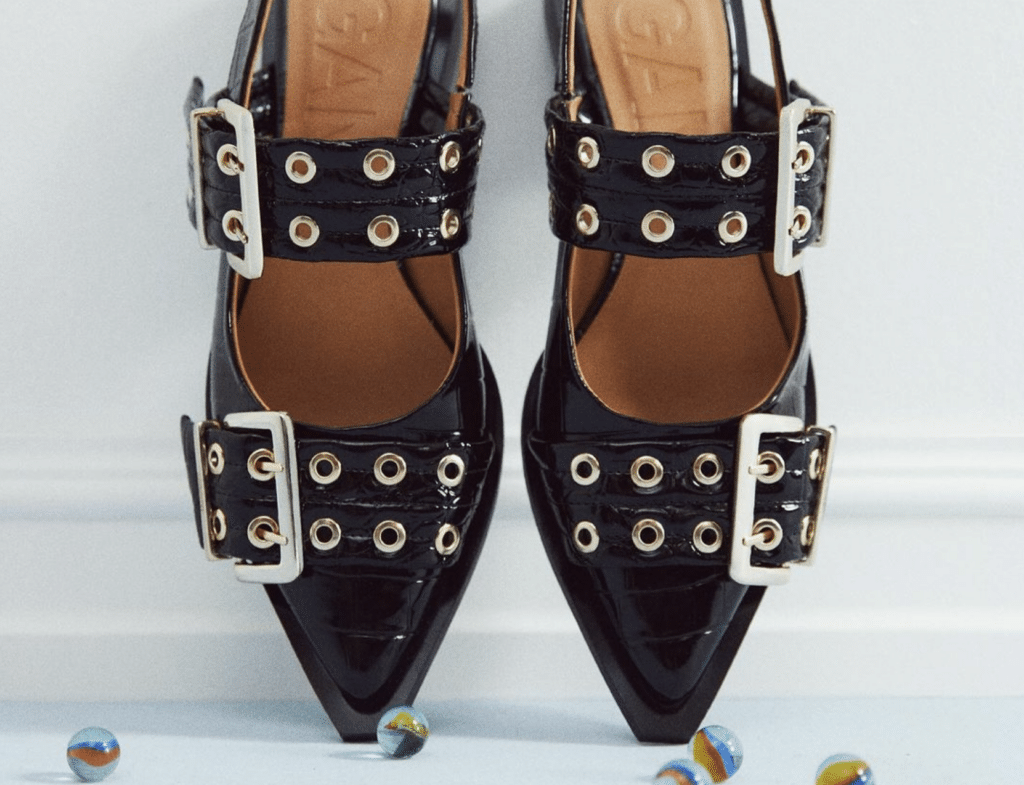A European trademark appeals board confirmed the invalidity of one of Birkenstock’s registered designs following a challenge from Balenciaga this summer in a decision that speaks to how vulnerable Birkenstock’s enduringly-popular designs might be to challenges. The invalidation proceeding – and subsequent appeal – that pitted Birkenstock against Balenciaga got its start in November 2021 when the Kering-owned fashion brand argued that the publicly-traded sandal company’s furry sandal design lacked the necessary individual character to be protected by EU design laws (and thus, its registration should be overturned), despite Birkenstock’s claims to the contrary.
In a decision in June, the Third Board of Appeal of the European Union Intellectual Property Office (“EUIPO”) upheld the EUIPO Cancellation Division’s earlier decision to invalidate a Community Design registration that covered Birkenstock’s Arizona Big Buckle. At the heart of the Board’s decision was its finding that Birkenstock’s sandal design lacks the necessary “individual character” to be protected as a registered community design because it is too similar to a sandal design that was already available to consumers when Birkenstock sought design protection.
Balenciaga’s Invalidation Bid
Balenciaga based the bulk of its bid to invalidate a Community Design registered to Birkenstock (No. 7 009 303-0002) on the existence of a markedly similar sandal from retailer Next, which had been made available to the public – by way of Amazon’s French marketplace site – as early as March 2018, thereby, predating Birkenstock’s October 2019 filing of the contested design.

> Prior Disclosure: Siding with Balenciaga (and thus, upholding the Cancellation Division’s decision), the Board determined that the availability of the Next sandal in March 2018 was sufficient evidence of prior disclosure to the public. (Pursuant to Article 6(1)(b) of the Community Design Regulation (“CDR”), a registered design shall be considered to have individual character if “the overall impression it produces on the informed user differs from the overall impression produced … by any design which has been made available to the public before the date of filing the application for registration …”
And a design is considered to have been “made available to the public” under the CDR if it has been … used in trade or otherwise disclosed, before the filing date of the contested design.)
> Individual Character: Having established prior disclosure, the Board turned its attention to the individual character of the Birkenstock sandal, stating that under Article 6(2) of the CDR, “the degree of freedom of the designer in developing the design must be taken into consideration.” The degree of design freedom is measured by considering “the constraints of the features imposed by the technical function of the product,” according to the Board, which noted that for a design to have individual character and thus, be registrable, it “must have clear differences from the previously known design[s].”
For sandals, the Board held that there are only a few technical specifications at play, all of which result from the need for sandals to be “worn on the foot, put on and removed, and not [get] lost when carrying them.” As such, “the remaining features, such as the specific design of the sole and the upper shoes, the material and the coloring, are freely configurable,” and accordingly, “the number of different designs” – and the amount of design freedom – for sandals is “huge.”
The problem for Birkenstock, the Board held, is that while there are “virtually no limits on the designer” when it comes to “the specific shape of the sole and the upper shoe, the materials used, and the coloring,” the overall impression of its sandal does not differ from the overall impression of Next’s design. It determined that there are “certain differences” between the two companies’ sandals, including in their “fur structure” and in the appearance of the buckles. However, “the designs essentially have the same appearance,” according to the Board, which ultimately found that the Birkenstock sandal lacks individual character compared to the earlier design.
> Market Saturation: Birkenstock did not provide any evidence that the market for sandal designs had reached a point of saturation, the Board stated, asserting that “the question of the concentration of designs in the sense of saturation of the prior art, has no connection with a designer’s degree of freedom.” If anything, “any saturation of the state of the art can make the informed user more aware of differences between the designs under comparison. In the present case, however, the documents submitted do not indicate that the concentration of … sandal [designs] would be particularly high or particularly low.”
>> TLDR: The similarities between Birkenstock and Next’s sandals would be easily recognized by an informed consumer, which means that Birkenstock’s design lacks the necessary individual character to be protected under the CDR. Against that background, the Board upheld the Cancellation Division’s decision to invalidate Birkenstock’s registration for the Arizona Big Buckle shoe.
THE BIGGER PICTURE: There has been a proliferation of Birkenstock-inspired designs in recent years, which has created challenges for Birkenstock as it contends with both mass-market and luxury brands releasing products that appear to mimic its time-tested aesthetic. Balenciaga has been in this territory before, having introduced suede leather mules for its Spring 2024 collection that feature the double buckle strap and cork sole famously associated with Birkenstock. On the heels of Balenciaga introducing the shoes, fashion media was quick to point out the commonalities, with menswear site Hypebeast, for instance, noting that Balenciaga’s mules “appear to be a take on Birkenstock‘s Boston Suede Clogs.”
Meanwhile, Brunello Cucinelli’s Monili suede buckle flat mules followed a similar model – albeit at a steeper price point.
The increase of Birkenstock-inspired designs could cause the German footwear company to take an increasingly defensive approach by way of litigation – or at the very least, threats of litigation. Such an approach would not come without risks, of course, as any parties that it looks to wage infringement claims against may attempt to defend themselves by challenging the strength and/or validity of Birkenstock’s rights, including by way of invalidation proceedings. (A behind the scenes scuffle may have prompted Balenciaga to wage the invalidation proceeding here.)
After all, Birkenstock has faced challenges to its rights. Early this year, for example, the German Patent and Trademark Court confirmed that the pattern that appears on the sole of many of Birkenstock’s sandals lacks distinctiveness for footwear and therefore, is not eligible for protection as a position mark. At the same time, a similar decision was reached at the European Union level, with the EU General Court confirming the cancellation of Birkenstock’s trademark for the entirety of the bloc (Case T-365/20).
The case is Birkenstock IP GmbH v. Balenciaga SAS, R 2499/2022-3 (EUIPO, Third Board of Appeal).











